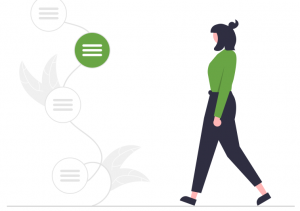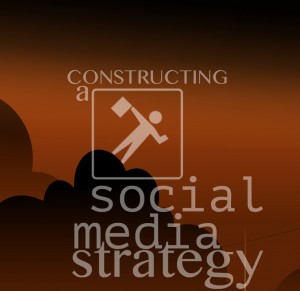This year has seen entire CBDs sit empty, as office workers have had to work from home – many for the first time. This experience has caused a lot of people to think more deeply about what makes an ideal workspace – beyond having the right tech and a fast internet connection.
Sure, not everyone’s home situation is the same. My wife and I weren’t home-schooling kids between Zoom meetings, for example. And many people don’t have a dedicated office space like we do, and they are instead forced to compete with the rest of the family for the kitchen table. But whether the issue is kids requiring attention, pets jumping on keyboards or any of the other intrusions and noises that happen in a shared space, the central theme is the same.
Interruptions are the enemy of productivity, negatively impacting on your ability to focus and think effectively.
Thing is, while working from home might have highlighted this issue for many people, it’s not as if most offices are free of noise and intrusion. Advocates for the open-plan office layout usually talk about collaboration between co-workers. But research published in the Journal of Environmental Psychology in 2013 found them to be “more disruptive due to uncontrollable noise and loss of privacy”, outweighing any benefits from increased “ease of interaction”.
In my experience, “ease of interaction” is often part of the problem, whether working from home or the office. It’s far too easy to turn to the person next to you, or pop your head over the divider, for the most trivial of reasons. While you might be between tasks, keen for a couple of minutes of light banter, your neighbour might be in the middle of a complex thought or idea that … no, it’s gone now.
This is why my number one tip for a productive workspace is less about the space and more about your ability to reduce and manage interruptions.
“I’m not interrupting you, am I?”
If you’ve ever interrupted someone and thought their angry or frustrated response was over the top – “I was only asking” – consider that people take an average of 23 minutes and 15 seconds to return to a task following a distraction.
Having been interrupted, the average person is more likely to take the “opportunity” of the forced break to read those other emails they just saw in the inbox, or make a coffee, or do any of the small procrastinations all of us are prone to before returning to the original work.
Following an interruption, you may also have a different set of browser tabs open, or you might need to spend a few minutes putting documents or tools away, taking time to return the workspace to how it was before the work can continue.
In short, the more distractions and interruptions you have to deal with – often in response to the priorities of others – the longer you’ll take to complete the task that’s your current priority.
If that’s not enough, research from 2016 found that interruptions also degrade the quality of work.
Knowledge-based or creative tasks require more mental effort and working memory – that part of your memory that holds information and ideas in your head while you work with them. Yes, just like the RAM in your computer.
Some people naturally have more working memory capacity than others, equipping them to ignore or bounce back from distractions more easily, while others are more vulnerable to distraction. For example, I have ADD (the less outwardly hyperactive version of ADHD), which means my brain struggles with focus at the best of times and is incredibly distractable.
Therefore, even if you don’t feel too distracted in a busy or noisy environment, it could be because your task requires less mental effort, or you naturally have a higher working memory capacity. But those around you might be having a very different experience.
So, how do you know if someone is “in the zone”, deep in creative thought, and not working on a routine email or spreadsheet? Most of the time, you don’t; so, don’t interrupt unless absolutely necessary.
Sorry, but them’s the rules.
Taking back control of your space
Above my desk hangs a souvenir from The Bodleian Library in Oxford: a “Silence Please” sign. It gets pointed to a lot whenever there are visitors in the house.
Training those around you to respect your need for quiet is important. Quiet doesn’t have to mean silence (although, for me it usually does). Some people focus better with music playing because it puts them in control of the environment and the noise. Quiet in this sense is about blotting out external distractions.
This is why a common technique in many an open plan office is to use headphones. This not only blocks out noise from around you, but also serves as a signal to others that you’re “not available”.
If you’re lucky enough to have a door you can close, this can be another easy signal that you’re not to be interrupted. Of course, that only works if you leave the door open when interruptions won’t disrupt you too much – you can’t ban people from your space entirely – so be judicious about when and how often you do so.
Digital distractions can be more prevalent than interpersonal ones – particularly for people working in social media. Ideally, social media duties should be shared across the team, so you only need to have notifications switched on and monitoring tools open when scheduled. Then you can plan your other activities – such as creating future social media content – for those times when you can give them your full attention.
Try to avoid checking email as a rolling activity throughout the day. If someone needs an urgent response, email would arguably be the wrong channel anyway. Let people know to pick up the phone instead or send a text to alert you when a response is needed right away.
Ultimately, this aspect of your workspace is about setting expectations with the people around you, both physically and virtually.
Managing distractions
Beyond that, the best way to manage distractions is to accept they will still happen.
According to 2018 research published by the University of California (UCLA), traditional time management strategies, such as prioritised to-do lists and blocking out time for individual tasks, leave little room for flexibility when the day doesn’t unfold as planned.
Instead, the research found that a technique called contingent planning is more effective and realistic in its approach to managing distractions. In short, contingent planning assumes you will be interrupted, pulled away from your work multiple times – and sets expectations accordingly.
This idea of resetting expectations about how much work we can reasonably achieve is a common theme in 2020 – particularly in how it relates to stress and mental health in the workplace – as the vast majority of office workers have found themselves working from home in often less-than-ideal circumstances.
The UCLA researchers recommend preparing for each day by considering the likely interruptions ahead. Do you expect interruptions? For most of us, that answer is probably “Yes” on most days – which means we need to be honest about how many and how disruptive these interruptions are likely to be and plan our work accordingly.
It’s easy to view an effective workspace as a purely physical environment of desks and devices and access to coffee. But in many ways the most important workspace is the one inside your head.
After all, that’s where most of your work actually happens before your fingers transcribe those thoughts into words on a screen.
Business & Finance Articles on Business 2 Community
(39)

